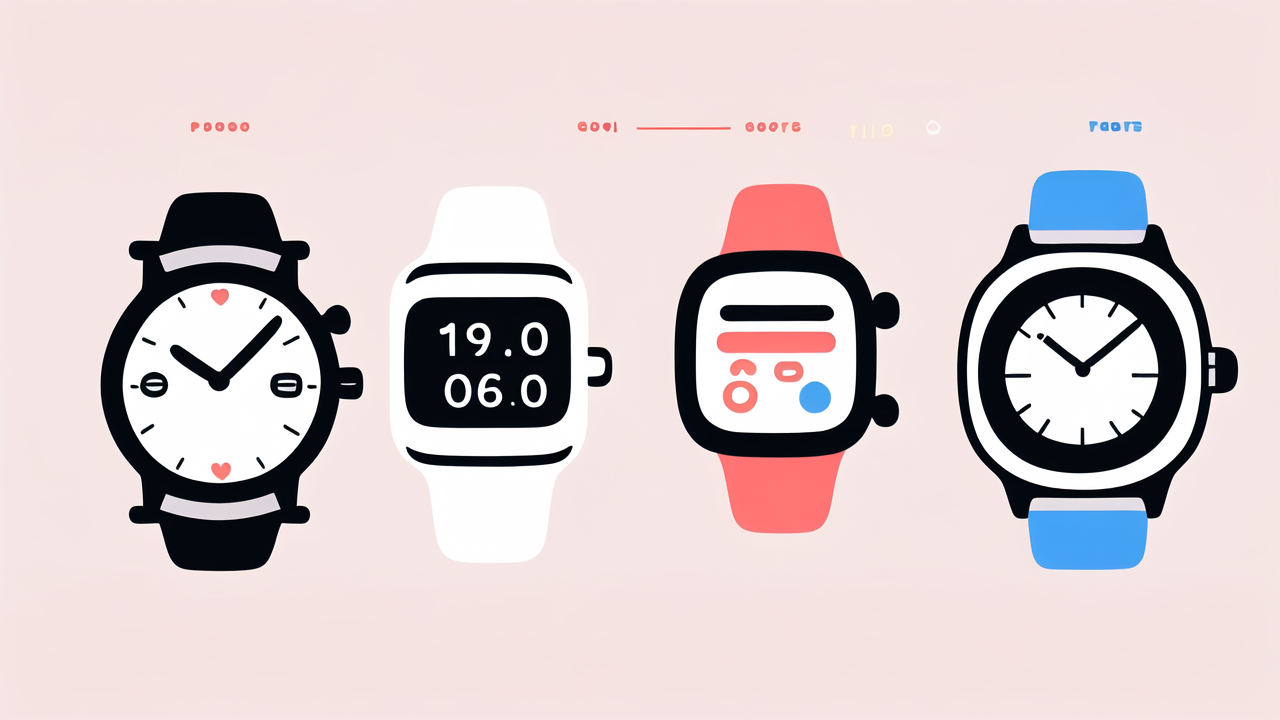Understanding the Dynamics: What Sets Smart Watches Apart
The Evolution of Wearable Technology in the Fitness Niche
Wearable tech has come a long way in the fitness world. It started with simple pedometers. These devices only counted steps. Now, we have advanced smart watches. They can track various health metrics. The journey has been rapid and exciting.

Smart watches have become more than just time-telling devices. They are now fitness companions. They can monitor heart rate, sleep patterns, and even stress levels. This evolution has made them popular among fitness enthusiasts.
Wearable clothing, on the other hand, is a newer concept. It integrates tech into fabric. This allows for more seamless tracking. However, it's still in its early stages compared to smart watches.
Key Features that Define a Smart Watch
Smart watches have several key features that set them apart. These include:
- Touch screens for easy navigation
- GPS tracking for accurate distance measurement
- Heart rate monitoring for fitness insights
- Smartphone notifications for staying connected
- Water resistance for use during workouts
- Long battery life for convenience
These features make smart watches versatile tools for fitness enthusiasts. They provide real-time data during workouts. This helps users track their progress and set goals.
Smart watches also offer customization options. Users can choose which metrics to display. This personalization enhances the user experience.
The Impact of Connectivity and Apps on User Experience
Connectivity is a game-changer for smart watches. They can sync with smartphones and other devices. This allows for seamless data transfer and analysis.
Apps play a crucial role in enhancing functionality. There are apps for various fitness activities. These include running, cycling, swimming, and more. Users can download apps that suit their needs.
Many smart watches have their own app ecosystems. This creates a unified platform for fitness tracking. Users can view their progress, set goals, and share achievements.
Connectivity also enables social features. Users can compete with friends or join challenges. This adds a fun, motivational aspect to fitness tracking.
Analyzing the Market: Trends in Smart Watches and Wearable Clothing
The Growth of Smart Watches in the United States
The smart watch market in the US has seen significant growth. More people are adopting these devices for fitness tracking. Sales have increased year over year.

Several factors contribute to this growth:
- Increased health awareness
- Technological advancements
- Competitive pricing
- Integration with smartphones
Major tech companies have entered the market. This has led to more options for consumers. It has also driven innovation and competition.
The pandemic has further boosted smart watch adoption. People became more health-conscious. They sought ways to monitor their fitness at home.
Consumer Preferences: Smart Watches vs. Wearable Apparel
When it comes to fitness tracking, smart watches are more popular than wearable clothing. There are several reasons for this preference:
- Versatility: Smart watches can be worn all day, not just during workouts
- Ease of use: Touch screens make navigation simple
- Familiarity: People are used to wearing watches
- Visibility: Easy to check stats at a glance
Wearable clothing has its advantages too. It can provide more accurate data for specific activities. For example, smart shirts can track posture during yoga.
However, smart watches offer a broader range of features. They can track multiple activities and provide general health insights.
The Future of Wearable Technology: Predictions and Trends
The future of wearable tech looks promising. We can expect to see:
- More advanced health monitoring features
- Longer battery life
- Improved accuracy in tracking
- Integration with other smart devices
- Enhanced AI for personalized insights
Smart fabrics may become more prevalent. This could lead to more advanced wearable clothing options.
We might see a convergence of smart watches and wearable clothing. This could result in hybrid devices that offer the best of both worlds.
The Ultimate Guide to Making an Informed Purchase
Comparing Price Points and Functionality
Smart watches come in a wide range of prices. Entry-level models start around $50. High-end models can cost over $500. The price often reflects the features and brand reputation.

Wearable clothing tends to be more specialized. Prices vary based on the type of garment and technology used.
When comparing, consider these factors:
- Battery life
- Display quality
- Water resistance
- Compatibility with other devices
- Available apps and features
It's important to balance cost with functionality. A more expensive device isn't always better for everyone's needs.
Navigating Through the Features: What Matters for Fitness?
For fitness enthusiasts, certain features are more important than others. These include:
- Accurate heart rate monitoring
- GPS tracking
- Waterproofing for swimming
- Long battery life for extended workouts
- Customizable workout modes
Consider which activities you'll be doing most. A runner might prioritize GPS accuracy. A swimmer would need water resistance.
Look for devices that offer detailed workout analysis. This can help you improve your performance over time.
Some smart watches offer advanced features like VO2 max estimation. These can be valuable for serious athletes.
Ensuring Compatibility with Fitness Ecosystems and Platforms
Compatibility is crucial when choosing a smart watch. Consider which devices and platforms you already use.
Many smart watches work with popular fitness apps. These include Strava, MyFitnessPal, and Nike Run Club.
Some brands have their own ecosystems. Apple Watch works best with iPhone and Apple Health. Fitbit has its own app and community.
Check if the smart watch can sync data with your preferred platforms. This ensures a seamless fitness tracking experience.
Consider future-proofing your purchase. Look for devices that receive regular software updates. This can extend the life and functionality of your smart watch.




Leave a comment
This site is protected by hCaptcha and the hCaptcha Privacy Policy and Terms of Service apply.